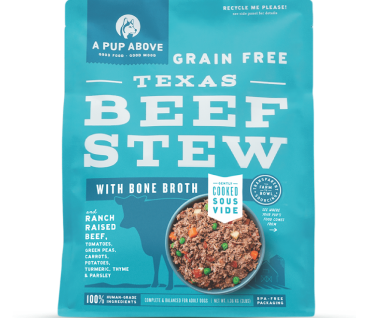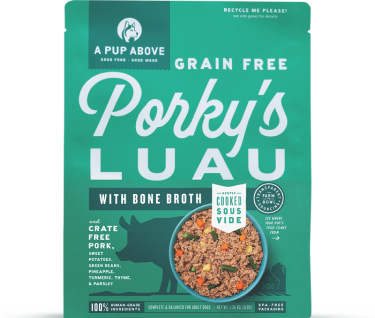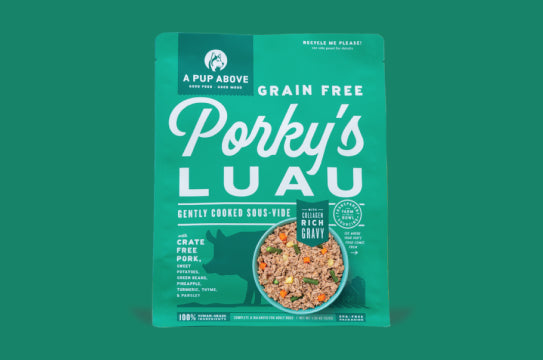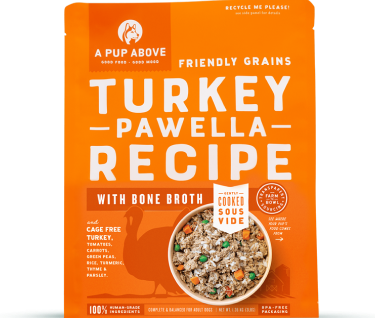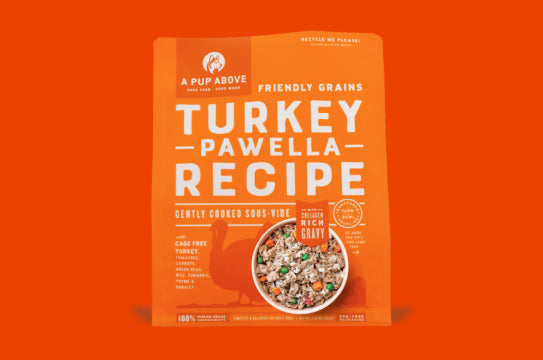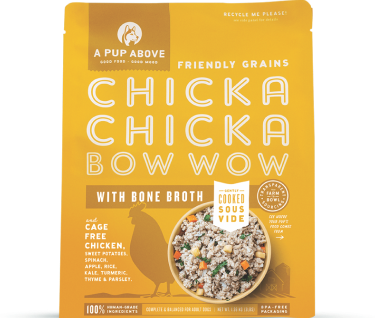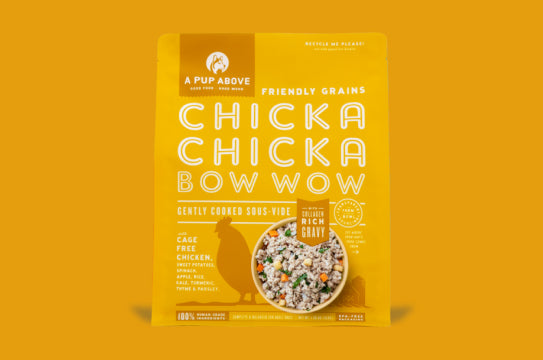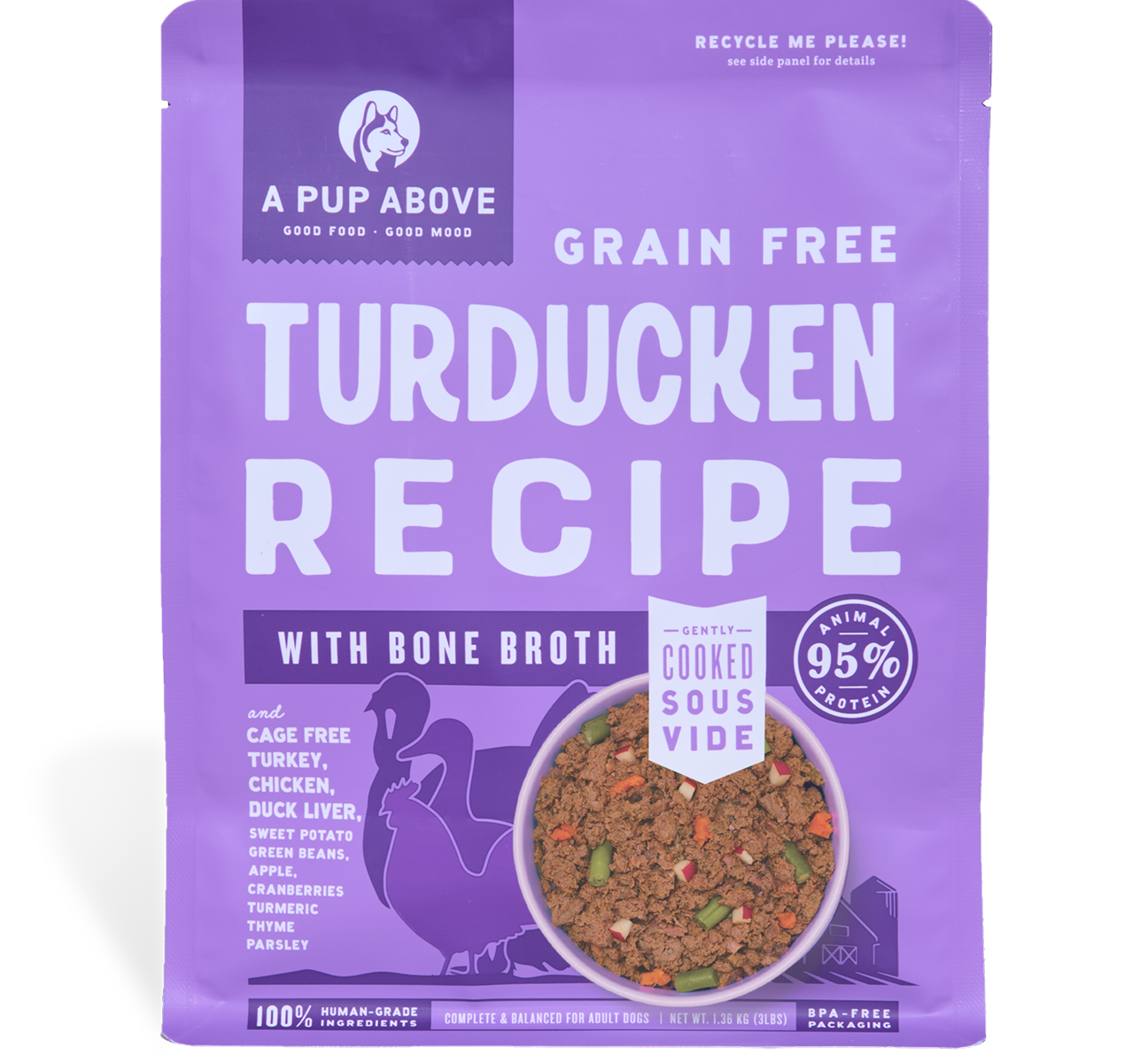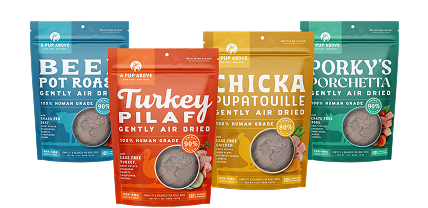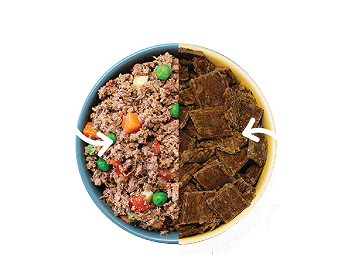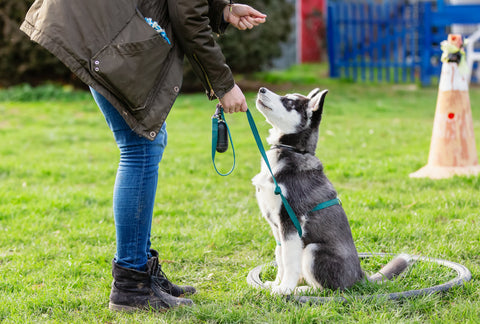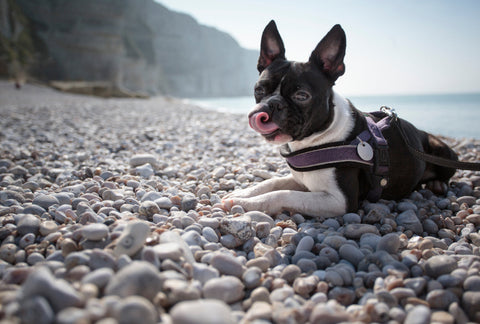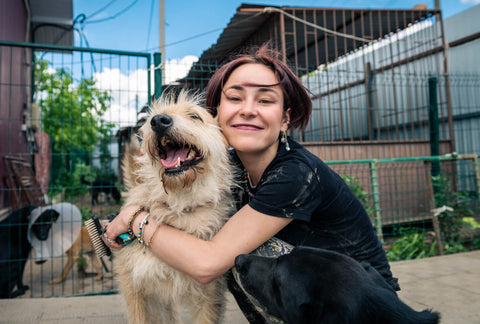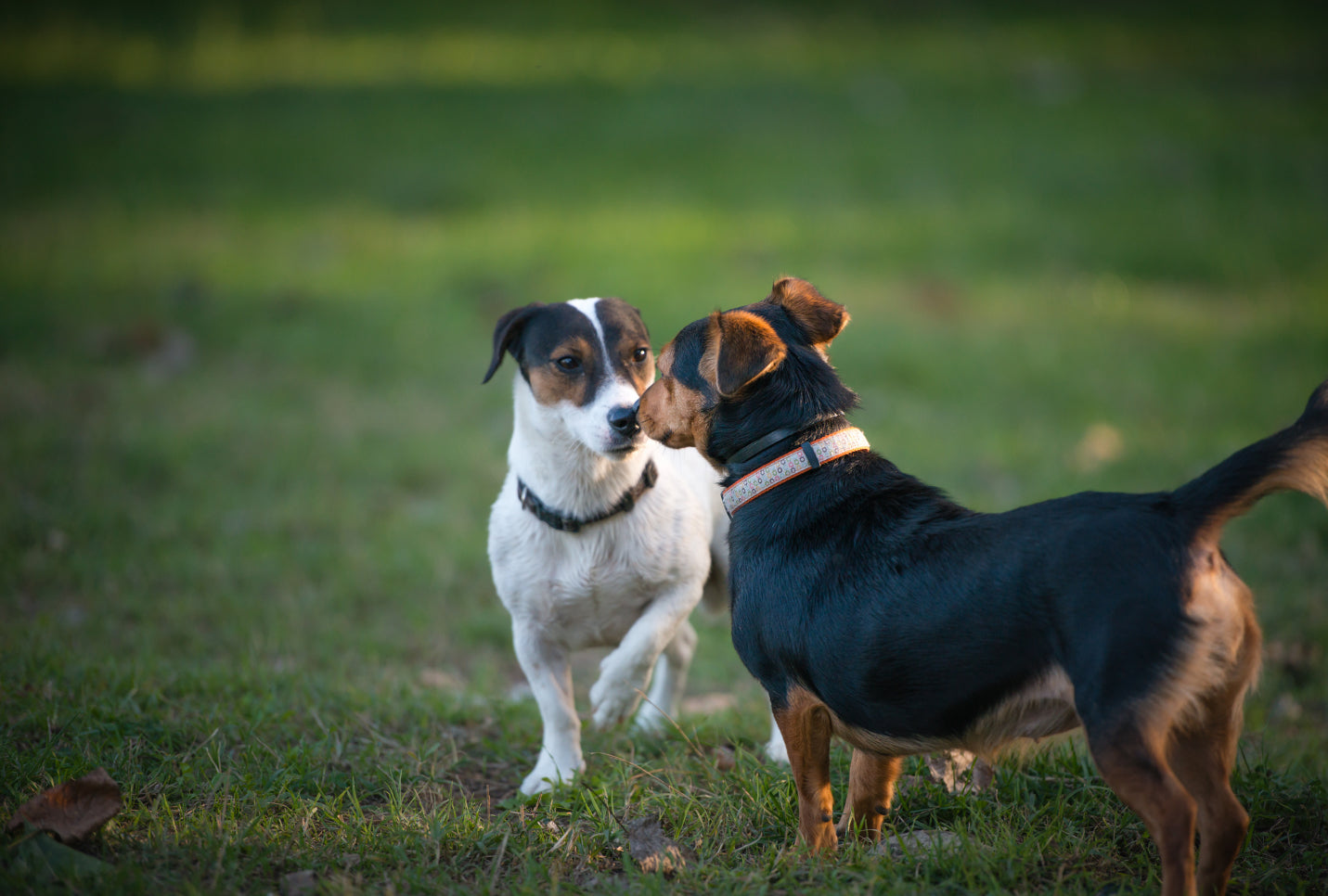
How To Introduce Dogs Properly
Bringing a new dog into your home or introducing your furry friend to another canine companion can be an exciting and heartwarming experience. However, it's important to approach the introduction process with care and consideration to ensure a smooth and successful meeting.
In this article, we'll share tips and tricks on how to introduce dogs properly based on dog behavior. We'll also provide some helpful information on reading canine body language so you can make sure your new family members are comfortable and enjoying their introduction.
With a bit of patience, preparation — and A Pup Above in your corner — you can help create a safe space for your furry friends' first impressions and first meeting. They’ll be best friends in no time.
Let's get started!
Why Do Proper Dog Introductions Matter?
Proper introductions between new dogs and current dogs are essential for establishing a positive and harmonious relationship. These introductions provide an opportunity for the dogs to get to know each other, understand their boundaries, and build trust.
By taking the time to have dogs meet properly, you can prevent conflicts, reduce stress, and promote a positive connection between your furry pals — it sets the stage for long-lasting friendship and enjoyable future interactions.
Understanding Dog Body Language
Understanding dog body language is crucial when introducing dogs to ensure their safety and comfort. Dogs communicate primarily through body language, and being able to read their signals will help you gauge their emotions and reactions during the introduction process.
Here are some key body language cues to look out for:
- Tail Position. A relaxed, neutral tail position indicates a calm and comfortable dog. A tail held high and stiff can indicate alertness or arousal, while a tucked tail suggests fear or anxiety.
- Ears. Forward-facing and relaxed ears typically indicate a calm and friendly dog. Pinned-back ears may indicate fear or aggression.
- Eye Contact. Soft, relaxed eyes signify a friendly and relaxed dog. Staring with a fixed gaze can be a sign of tension or potential aggression.
- Body Posture. A loose and wiggly body posture with relaxed muscles indicates a friendly and open dog. Stiffness and raised hackles (the hair along the back), and a lowered body posture can indicate anxiety or aggression.
- Facial Expressions. A relaxed, open mouth with a slightly open or panting tongue is a sign of a calm and friendly dog. Snarling, baring teeth, or a wrinkled muzzle may indicate aggression or fear.
- Play Signals. Play bows, where a dog lowers their front body while keeping their rear end up, are often an invitation to play. Relaxed, bouncy movements and gentle pawing gestures can also indicate playfulness.
- Vocalizations. Dogs may use different vocalizations to communicate. Whining, whimpering, growling, or barking can have various meanings depending on the context and accompanying body language.
Note: Keep in mind that individual dogs may have unique body language cues, so it's wise to observe them in different situations to understand their specific signals.
How Do I Prepare for a Dog Introduction?
Now that you understand the importance of proper introductions and how to read canine body language, you're well on your way to introducing dogs properly! But before the big day arrives, it's crucial to prepare both dogs physically and mentally.
Here's what you can do:
Individual Attention
Spend quality time with each dog individually to ensure they receive exercise and mental stimulation. Engage in play sessions, walks, or training exercises to help them burn off excess energy.
Grooming
Give both pups a nice grooming session to help them look and feel their best. Brush their coats, trim their nails, and ensure they are comfortable and clean.
Health Check
Prioritize their well-being by ensuring they are up to date on vaccinations and have received a recent health check from a veterinarian. This ensures they are in good physical condition for the introduction.
Where Should I Introduce New Dogs?
Selecting an appropriate time and place for the introduction plays a crucial role in its success. Consider the following factors:
Neutral Territory
Opt for a neutral location where neither dog feels possessive or territorial. This could be a local park, a friend's yard, or any unfamiliar space where both dogs can feel at ease.
Minimize Distractions
Choose a time when there are fewer distractions around, such as fewer people or other animals nearby. This allows the dogs to focus on each other and their initial interaction.
Calm Environment
Create a peaceful environment by avoiding loud noises, crowded areas, or chaotic settings. A calm atmosphere will help the canines feel more relaxed and comfortable.
How Do I Introduce New Dogs?
Now that you've prepared both pups and chosen the right time and place for the first dog interaction, it's time for the actual introduction.
Follow these steps to ensure a smooth and friendly meeting:
Leashed Introduction
Start by having both dogs on leash, maintaining a safe distance between them. Allow them to observe each other while keeping the leashes loose. This way, they can become familiar with each other's presence without feeling threatened off-leash or lunging at one another.
Positive Reinforcement
Use positive reinforcement techniques to reward calm and relaxed behavior during the first introduction. Treats, praise, and gentle strokes can help create a positive association with the presence of the other dog for the first time.
Controlled Approach
Gradually decrease the distance between the dogs if they exhibit calm body language and show interest in each other. Monitor their reactions and maintain a relaxed atmosphere.
Canine Body Language
Pay attention to dog body language to better understand their emotions and reactions during the introduction.
Look for signs of relaxation, playfulness, and mutual interest. If either pooch shows signs of fear or aggression, separate them and consider consulting a professional trainer or dog behaviorist for guidance.
Supervised Interactions
Once the dogs seem comfortable with each other, allow them to interact under close supervision. Keep play sessions short and positive, and be ready to intervene if necessary.
Building a Lasting Bond
After the initial introduction, continue to foster a strong bond between your dogs by providing ongoing socialization and positive experiences.
Schedule regular playdates, walks, and activities that allow them to interact and strengthen their connection. Remember to always prioritize their safety and well-being.
How Do I Introduce a New Puppy?
If you're introducing a new puppy to your existing dog, there are a few additional considerations to keep in mind:
Separate Initial Introductions
Initially, it's best to introduce the new puppy to your existing dog one at a time. This allows each dog to become familiar with the puppy's scent and presence before meeting face to face.
Controlled Face-to-Face Introduction
Once both dogs have had a chance to become acquainted through scent, you can proceed with a face-to-face introduction. Use a baby gate or keep the puppy on leash while allowing your adult dog to approach and sniff the puppy. Monitor their body language and reactions closely.
Supervised Playtime
As your puppy grows more comfortable, you can gradually introduce supervised play sessions between the two dogs. Keep the sessions short and positive, and intervene if any rough play or aggressive behavior occurs. Make sure to provide separate spaces for each dog to retreat to if needed.
Training and Socialization
Continue to provide consistent training and socialization for both dogs. Enroll your puppy in puppy classes and engage in regular training sessions with both dogs together. This helps them learn to cooperate and interact positively.
Equal Attention and Affection
Ensure that each dog receives equal attention, love, and affection from you. This helps prevent jealousy or feelings of neglect, fostering a harmonious bond between both pups.
Tips for Canine Introduction Success
Remember, Rome wasn't built in a day, and neither is a strong bond between dogs. Building a successful relationship takes time, patience, and consistency.
Here are some additional tips to help you along the way:
Tip #1: Maintain a Positive Attitude
Create a calm and relaxed environment by maintaining a positive and peaceful attitude yourself. Dogs are highly perceptive and can pick up on your emotions, so staying calm will help them feel more at ease.
Tip #2: Gradually Increase Interaction Duration and Intensity
Start with short, supervised play sessions and gradually extend the duration as the dogs become more comfortable with each other. As they build trust, you can also introduce more interactive activities such as walks or joint training sessions.
Tip #3: Provide Each Dog With Their Own Space
Even though the dogs are getting acquainted, each dog needs to have their own space to retreat if they need some alone time. This helps prevent feelings of overwhelm or territoriality.
Tip #4: Avoid Forcing Interaction
Never force the dogs to interact if they show signs of fear or discomfort. Respect their boundaries and give them time to adjust at their own pace. Rushing the process can lead to negative associations and setbacks.
Tip #5: Keep Play Sessions Positive and Balanced
Encourage positive interactions during play sessions by providing a variety of toys and activities that engage both dogs. Ensure that play remains balanced, with neither dog dominating or becoming overly rough.
Tip #6: Reward Calm Behavior
Reward calm and relaxed behavior from both dogs. Offer treats and praise when they exhibit calmness and polite manners during their interactions. This reinforces positive behavior and helps establish a harmonious dynamic.
Tip #7: Practice Separate Feeding Areas
During the early stages of introduction, it's best to feed the dogs in separate areas to prevent any potential resource-guarding behavior. Gradually, once they are more comfortable with each other, you can bring their food bowls closer and introduce supervised shared meals.
Tip #8: Seek Professional Guidance if Needed
If you encounter challenges or if either dog shows signs of fear, aggression, or extreme anxiety during the introduction process, it's essential to seek guidance from a professional dog trainer or behaviorist. They can provide tailored advice and support.
Tip #9: Maintain Consistency in Training and Rules
Consistency is key to building a strong bond between dogs. Ensure that training methods, house rules, and boundaries are consistent for both dogs. This promotes a sense of fairness and helps establish a harmonious household.
Tip #10: Celebrate Wins
Building a lasting bond between dogs takes time, so be patient. Every dog is unique, and the timeline for their acceptance and friendship may vary.
Celebrate small victories and progress along the way, and remember to provide love and attention to each dog individually.
A Final Word
Introducing dogs properly is crucial for establishing a positive and harmonious relationship. By understanding dog body language, preparing both dogs physically and mentally, choosing the right time and place, and following a step-by-step introduction process, you can create a safe and enjoyable environment for your furry friends to bond and blossom.
Remember to be patient, provide equal attention and affection, and seek professional guidance if needed. With time and consistent effort, you can help your dogs build a lasting and positive connection.
Sources:
Introducing your new dog to your other dogs | The Humane Society of the United States
Resource guarding in dogs | The Humane Society of the United States
Top Stories
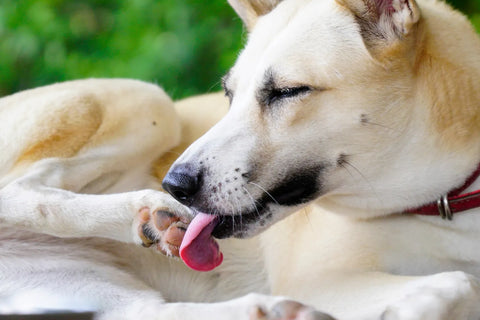
Why Do Dogs Lick Their Paws?

Why Do Dogs Whimper & Make Noises in Their Sleep?
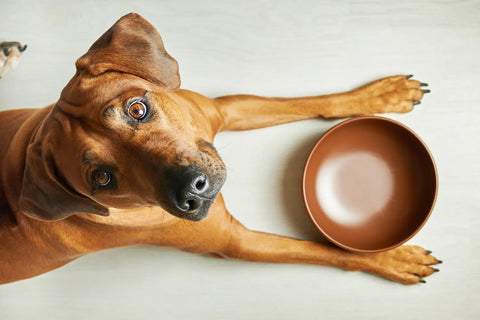
Healthy Vet-Approved Homemade Dog Food Recipes

How To Cook Sweet Potatoes for Dogs



